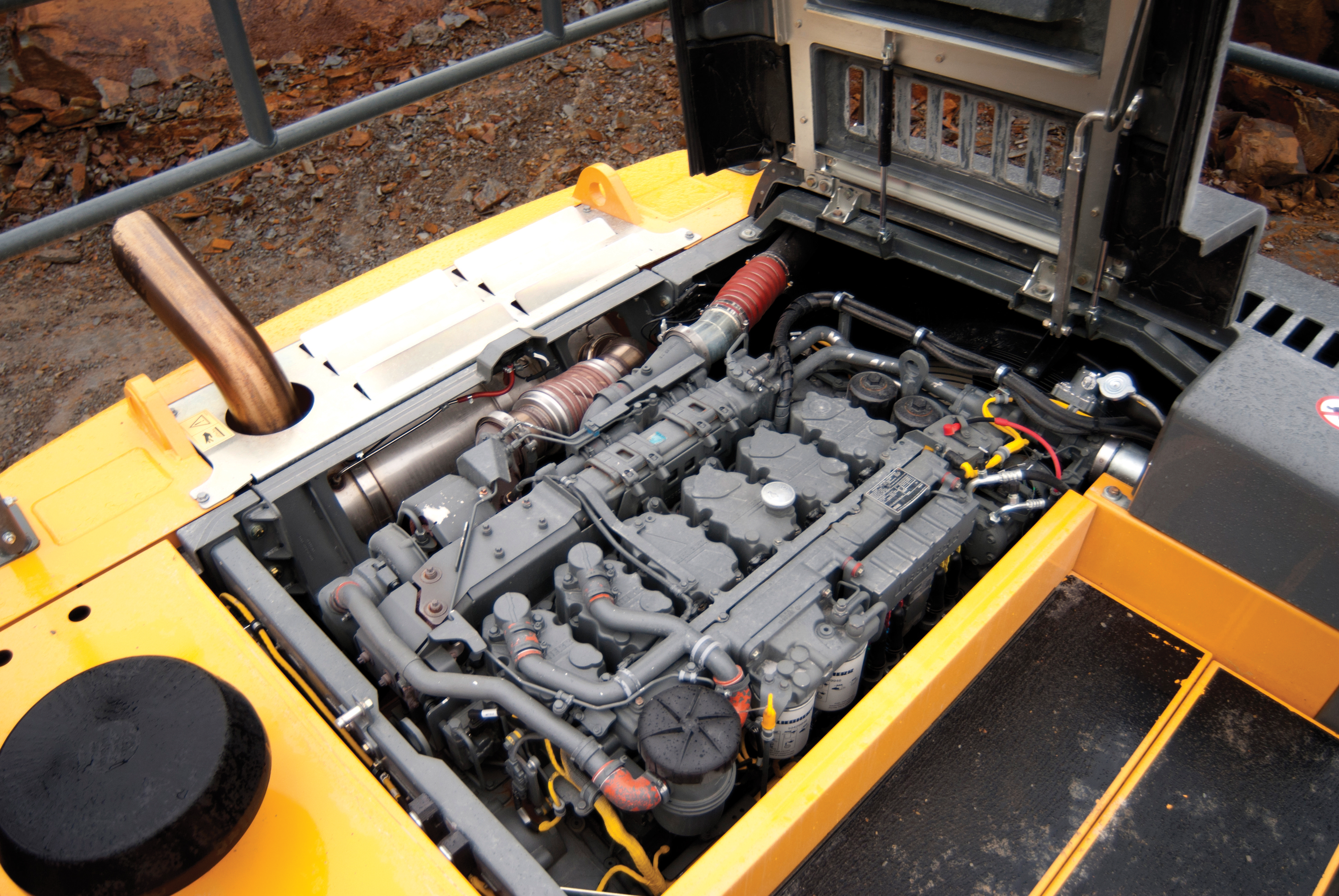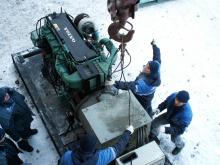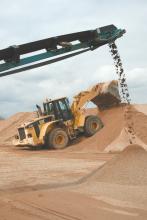
The Roman scholar Pliny the Elder is quoted as having said: “The only certainty is that nothing is certain.” He obviously didn’t work in the quarry business, but when it comes to machine breakdowns, perhaps he did. In any hard working quarry operation, whatever the material, wherever in the world you are operating, an absolute certainty is that machinery and equipment will wear out, writes Dan Gilkes.
How you deal with that fact, through preventative maintenance and scheduled overhaul, can play a major factor in the profitability of the site and the productivity of the machinery.
For most quarry operators waiting for a machine to break down or for wear parts to come to the end of their operating life is simply not an option. Scheduled servicing, inspection, overhaul and replacement ensure maximum working uptime and minimise the effect of that machine not working within the quarry.
Yet having made the decision to change components and wear parts, the quarry plant manager has further choices to make. Buying new is of course the easiest option, though also the most expensive. Using remanufactured components can provide an efficient and cost-effective alternative, often costing around 60-70% of the amount required for a new part, yet being covered by a similar warranty guarantee.
All of the leading equipment manufacturers offer a remanufacturing service, as does the majority of major component suppliers. Most will also provide a rebuild service too, and it is important to recognise that there is a distinct difference between rebuild and remanufacture.
In a rebuild, the manufacturer will strip and clean the component and reassemble using all necessary parts to meet the exact original specification, offering a warranty on the part going forwards. Remanufacturing on the other hand, though it involves much of the same process with dismantling and replacement of wear parts, will then often involve including any upgrades to the main unit that have been applied since that component was originally built.
This means that the motor, engine, drive or transmission can be returned to a machine, but it may well incorporate improved performance or durability features.
The service covers hydraulic cylinders, pumps and motors, travel and slewing gears, rope winches, splitter boxes and axles as well as diesel engines. If the maximum in-depth reconditioning level is chosen, the customer returns the used component and is supplied with one that complies with the latest technical standards, has been manufactured to new-product quality standards and carries the same warranty.
If the customer has used a preventative ordering policy, where the part is delivered before removing the worn component, the machine can be out of action for less than 24 hours. The customer receives a payment for the used component, which is set against the cost of the new unit.
After return to Liebherr, the used component is completely dismantled. Wear parts are discarded, those that can be reused have their paint finish removed and are cleaned and assessed according to strict standards. Machine tolerance measurements and crack testing determine whether the parts are suitable for remanufacturing.
If so, they are restored to as-new quality by industrial machining and processing methods. They then undergo final inspection, using the same test procedure as for new components. Every remanufactured exchange component complies with the manufacturer’s standards for new parts. In contrast to the exchange procedure, a general overhaul is carried out on the actual component returned by the customer, which means that the machine has to stand until the repair has been carried out unless the quarry carries spare stock of components. It is stripped down completely and cleaned and all parts subject to wear replaced, together with any that have been damaged. The component is then reassembled to the same technical standard as before, repainted, inspected to the manufacturer’s original standard and returned with a full warranty.
Caterpillar has 17 Reman facilities worldwide and remanufactures around 6,000 different components, including engines, hydraulic parts, drivetrain components, fuel systems and even machine tyres. Crushing equipment suppliers such as
By using this exchange process customers suffer minimal downtime on site, as the component change is part of the planned maintenance process. The exchanged wear parts are renovated and remanufactured ready for resale to another customer.
It’s not just machine suppliers that provide remanufacturing facilities. Component providers such as
No doubt the company also does much of the reman work for those manufacturers that use its engines too, providing it with twice the outlets to market and allowing the customer to decide who to deal with for its service exchange requirements.
Of course there are plenty of non-OEM suppliers working in the quarry business, offering parts for a wide range of machinery. One of the largest suppliers, H-E Parts International (HEPI), has been steadily expanding its operations worldwide over the last decade.
The US company has purchased nine suppliers of wear parts and mining machinery components around the world, bringing them under the H-E banner in six divisions. These include H-E Parts Birrana in Australia, that supplies brakes, final drives, differentials, axles and suspension systems for heavy quarry and mining trucks. There is also H-E Parts Crown, in Montana, USA, which also provides manufacturing and remanufacturing of heavy truck and shovel components.
Perth-based H-E Parts CME supplies crushing equipment and consumables throughout Australia, South East Asia, Africa and the Middle East, while H-E Parts Trading (Crushertec) delivers crushing wear parts from locations in Kuala Lumpur and Shanghai.
“I was looking to combine a highly fractured industry of independent suppliers to form a more robust viable alternative to the OEM,” said founder and CEO JP Richard.
“In the past six years we have been fortunate to become the world’s largest independent supplier of new, remanufactured and reconditioned parts and components for mining, quarry and construction equipment.”
The most recent addition to the H-E Parts International group is brake and friction surface supplier and reconditioning specialist Morgan Group, with service centres in Canada, the US, Chile and Peru.
“The Morgan Group is a natural and strategic complement to the H-E Parts family of companies,” said Richard.
“This acquisition offers HEPI immediate access to new markets and technologies as we continue our commitment to becoming the leading global alternative for aftermarket parts and solutions.”
Meanwhile,
A recent example is for a hard rock quarry in Kenya where it has been asked to supply new and refurbished
The plant includes a new UK-manufactured Goodwin Barsby vibrating grizzly feeder; a refurbished Goodwin Barsby ‘Blake’ double toggle jaw crusher and a refurbished Symons Nordberg 3’ standard cone crusher.
The Blake classic jaw crusher has been refurbished using genuine spare parts and wear parts by CMS Cepcor certified crusher technicians.
“CMS Cepcor has supplied hundreds of pre-used factory reconditioned crushers and screens over the last 20 years establishing a worldwide reputation for the supply of quality crushing equipment,” says the company, which has also recently supplied a refurbished Goodwin Barsby 915x610mm Acme single toggle jaw crusher to an aggregate production plant in the Philippines.
As mentioned, quarry machinery is always going to require spare part and service exchange components. The good news for customers is that there are now more suppliers than ever before providing a higher quality of remanufactured and service exchange parts, complete with a comprehensive warranty that in many cases matches that of new parts. In theory that should lead to reduced ownership and operating costs. However, as we know, in this business nothing is certain.









